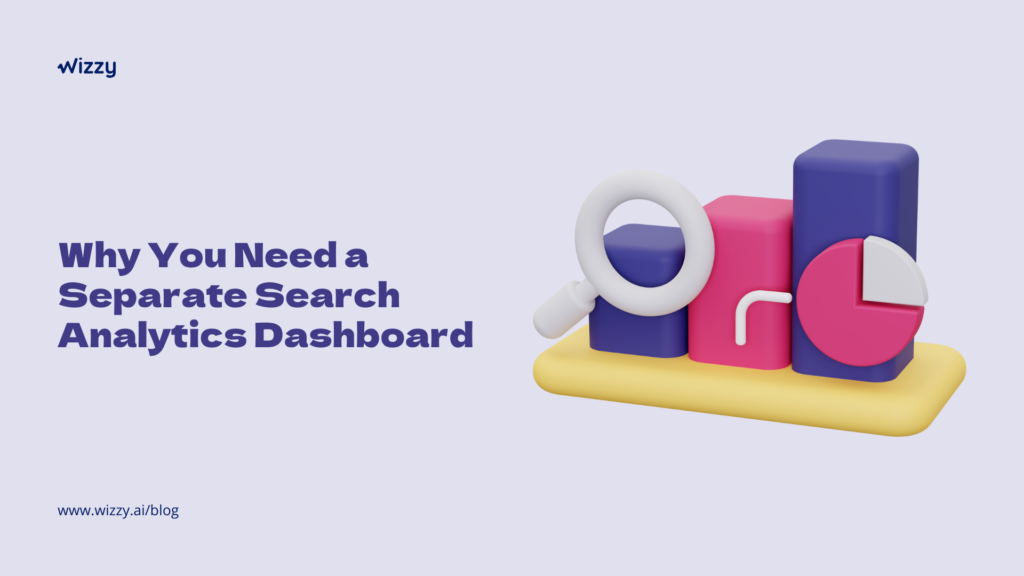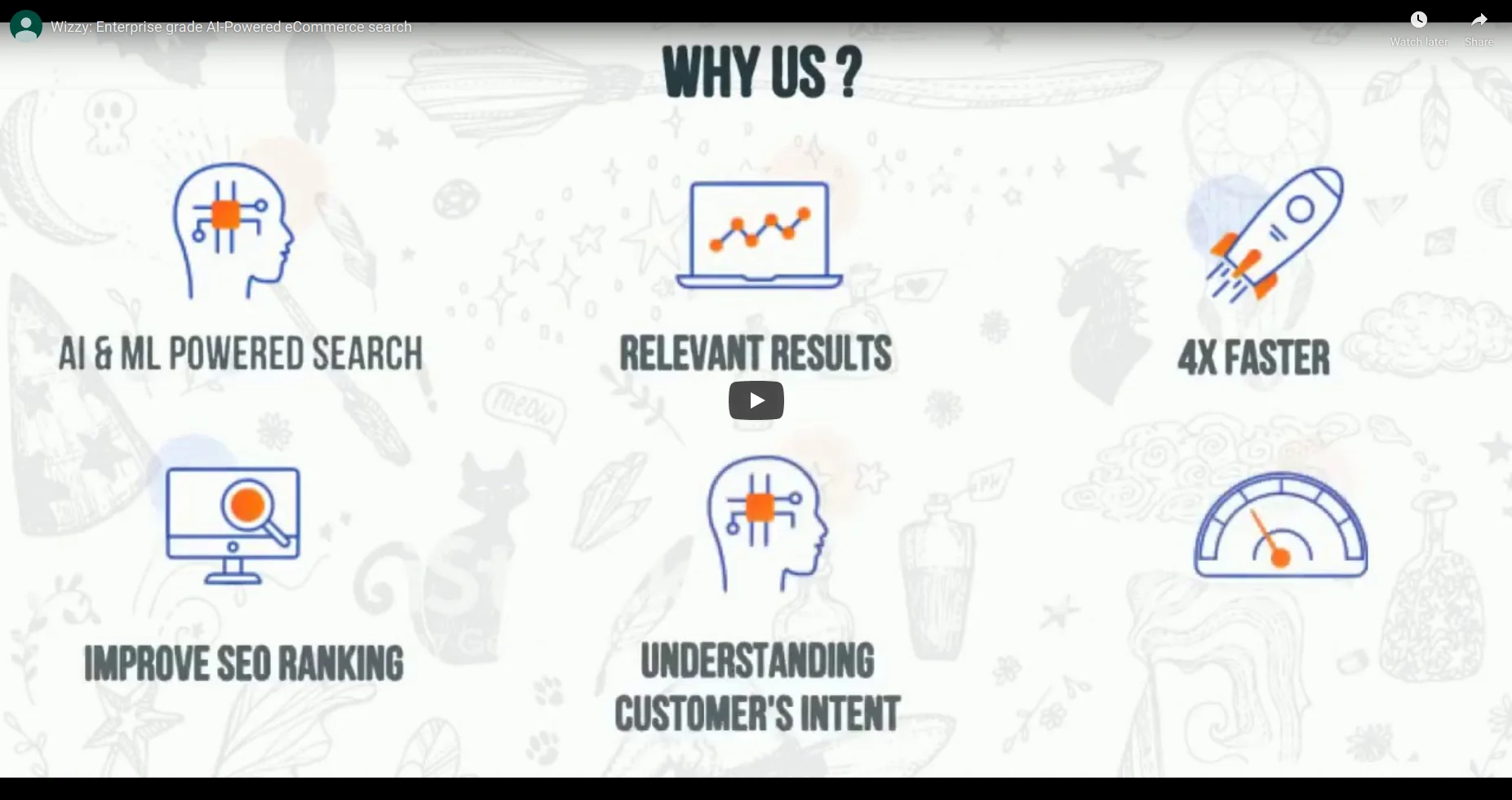When it comes to your e-commerce analytics, are you focusing primarily on your conversion rate or your average order value? If you’re like most retailers, you probably have one main analytics dashboard. It shows a variety of key performance indicators (KPIs), including things like average order value, conversion rate, and visitor loyalty.
That’s great for a general look at how your e-commerce site is performing overall — but what if you want to keep track of something more specific? For example, what if you want to monitor the search behaviour on your site or the performance of different site search filters because they have such a direct impact on conversions?
When it comes to e-commerce analytics, it’s important to be as specific as possible. Keeping track of every little detail can help you make informed decisions about content and ultimately drive more sales. We will take a closer look at site search analytics in this blog post. Here’s a list of questions or topics we will address in this blog post:
- What Is Site Search Analytics?
- Why You Need A Separate Search Dashboard
- What To Track On Your Site Search Analytics Dashboard
- Why Visual Analytics Is So Important For E-Commerce
- Wizzy – The Perfect Smart Site Search You Need
What Is Site Search Analytics?
Site search analytics is the process of tracking and analysing search behaviour or search patterns or keyword searches performed on your site to understand how your users are navigating through your website and what terminology they’re using to find the products.
This data can help you with insights not only into what your shoppers are searching for, but also how they are navigating through their site and how easy it is to find what they’re looking for.
Site search analytics is typically found in an e-commerce platform’s analytics section, but it could also be part of your website’s synthetic logging. If you’re using a SaaS search analytics solution like Wizzy, you’ll likely see what keywords visitors are using to find the products or information they’re looking for on your site.
Why You Need A Separate Search Dashboard
The best way to track your site search analytics is on a separate dashboard from your conversion rate and average order value. This way, you’re not getting distracted by the more general analytics data and can focus solely on site search.
In fact, many e-commerce analysts recommend that site search analytics be a top-level graph in your dashboard following conversion rate and average order value. This way, you can see trends that are specific to your site search data and aren’t distracted by other KPIs.
For example, let’s say your conversion rate is lower than expected — but your site search analytics show that site visitors aren’t using search or search filters than normal. That could be why your conversion rate is lower than normal — maybe inaccurate search results or the fewer site search filters are what’s causing less people to convert.
While your general e-commerce analytics can show you there might be an issue with your conversion rate, site search analytics can help you pinpoint why the problem exists.

What To Track On Your Site Search Analytics Dashboard
It’s important to track several key metrics. Some of the most important ones are as follows:
Revenue from search: This is pretty straightforward. You should always know how much revenue you generate from visitors who engage with your site search and end up making a purchase.
Site search keywords: What are your customers searching for? You can group keywords into categories, like colour and style, to see which products are getting the most searches.
Site search conversion rate: How many times a site search is performed and how many times a customer clicks on an item in the results.
Time per result: How long it takes customers to find what they’re looking for using site search. This is closely tied to site search conversion rate. If it takes too long for someone to find what they’re looking for, they might give up and leave your site.
Click-through rate: What percentage of people who perform a site search click on an item in the results. Ideally, this will be high — but you should still keep an eye on it to make sure it’s not too high and your site search is providing relevant results.
Your popular search terms: This is a list of search terms that directly lead to a sale. You should understand the structure of these search terms and see if there is a pattern. For example, are these search terms long and complex, do they include price search, or size or gender in the search term—boxers for women size L or walking shoes for girls pink or t-shirts under $10, etc. Your site search must understand complex search queries and understand the relationship between words in the search term. Learn more about how a smart site search can grow your sales and revenue here.
Search terms that lead to a sale: Not all search queries lead to sale. But you should have a list of search terms that lead to a sale. Look at the list every day and understand if there are patterns. Learn from these patterns and update all your product pages to contain the exact words and terms.
Search terms that don’t lead to a sale: This is important too. Learn which search terms don’t lead to a sale. Is it because the queries get poor search results or is there an underlying problem? Dig deep and understand the issue and fix it.

Why Visual Analytics Is So Important For E-Commerce
When you’re focused on specific analytics, you can also see trends in your data over time. This is incredibly important for e-commerce because you’re probably making changes to your site on a regular basis.
You might add new products, update your site copy, or try new marketing strategies that could have an impact on your site search analytics.
In order to see those trends, you need to have graphs and charts on your site search analytics dashboard. This way, you can quickly see if there are any major trends in your data that you need to address.
For example, you might notice that the average time per result is increasing. That could be a sign that you need to add more search filters or make your site search results more specific.

Wizzy – The Perfect Smart Site Search You Need
Wizzy is a lot like having your own personal shopper.
The Wizzy AI is designed to understand shopping intent even when search queries are long and complex. So your shoppers can quickly find what they’re looking for and add the products to the cart — right then and there.
Wizzy is built on cutting-edge AI and ML that automatically analyzes millions of products every day to make sure they’re relevant to whatever search terms people are using. It also has the power to learn from its mistakes, which means it gets better at understanding what you want as it goes along.We’ve made it easy to implement, so it works for independent e-commerce sites, apps, and marketplaces. And we can show how Wizzy works on your site in a quick demo — just click here to request one!
Wrapping It Up
When it comes to e-commerce analytics, you want to be as specific as possible. That way, you can focus on the numbers that matter to your business and what’s driving sales. When you’re tracking site search keywords, it’s important to track the site search conversion rate and the time it takes to find results.
You also want to track click-through rate and make sure the results are relevant. Wizzy is a great tool to understand site search analytics. Wizzy can help you track everything from revenue from search to insights to drive more revenue from search. Wizzy gives a bunch of visual data such as graphs that visualise trends in your data over time so you can make the necessary changes to improve your e-commerce search results.




